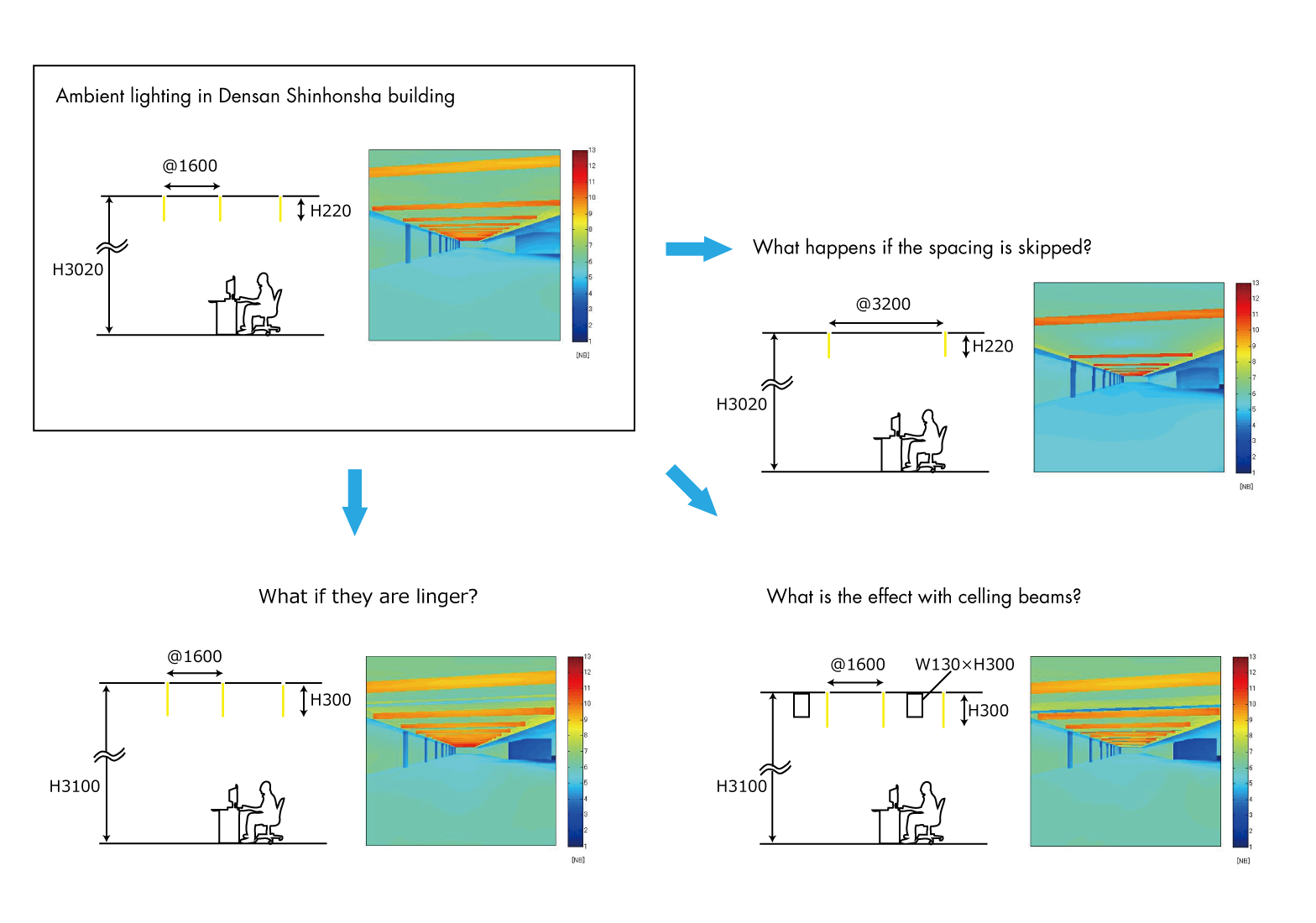Creating Optimal Lighting Environments with a Focus on Light and Space
Scroll Down
The lighting environment of an architectural space is an important element that dictates the comfort or impression of the space and also affects energy consumption. At Nikken Sekkei, we design lighting environments that focus not only on illuminance, which indicates the physical amount of light falling on a surface, but also “perceived brightness,” which is the actual perception of brightness in a given space.
CATEGORY
Lighting environment design that considers perceived brightness
Difficulty could be encountered in achieving spatial comfort if the design attaches importance to illuminance alone. This is because human perception of brightness in a space does not necessarily correspond to the illuminance level.
A different amount of light enters the eye from each of the various objects and surfaces making up the space, and the contrast also results in a different perception of brightness. In other words, all components making up the space we see form the lighting environment. These include not only luminaires and windows that let in natural light, but also the shape and materials of the walls, floor, and ceiling. Accordingly, attempts to brighten the space by simply increasing the amount of light or number of lighting units may not always result in enhanced perception of brightness due to the influence of contrast and surface reflectance. The affects of contrast and the amount of light entering the human eye must be studied when designing for perception of room brightness.
A lighting environment plan that takes perceived brightness into account will not only create a space with a high perception of brightness, but can also result in space designed to provide brightness contrast and a good balance between light and dark areas.
Through study of optimal perception of brightness by taking the perspective of people who occupy the space and considering the total elements that make up the space, we design lighting environments that deliver the highest level of comfort and maximum energy savings.
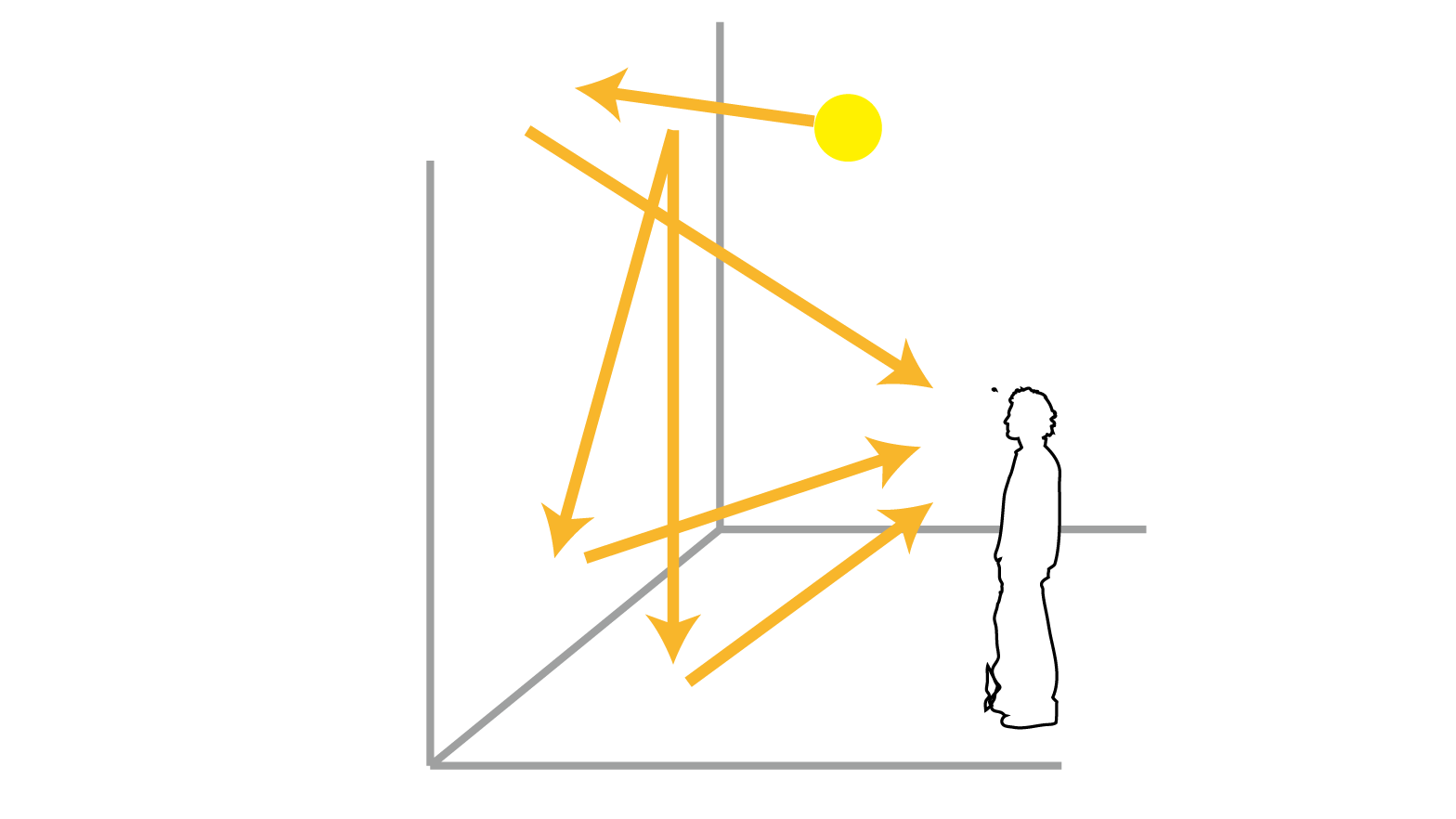 Illuminance and luminance
Illuminance and luminance
In planning lighting environments, it is essential to consider not only the amount of light falling on a surface (illuminance) but also the amount of light entering the eye (luminance)
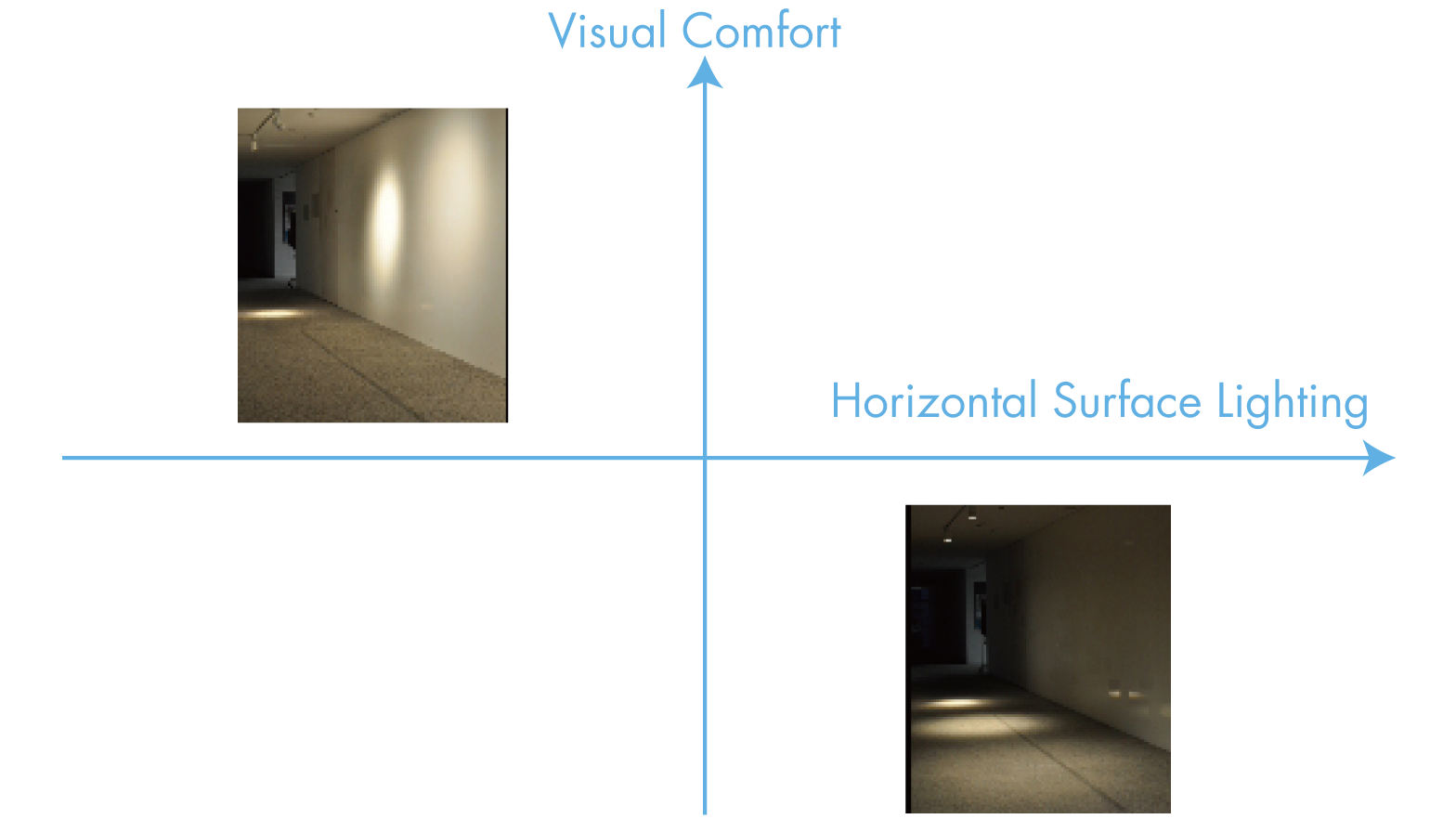 Transition from illuminance design to lighting environment design based on perceived brightness
Transition from illuminance design to lighting environment design based on perceived brightness
A person’s perception of brightness in a space is affected by the amount of light entering the eye and the contrast. The walls, floor, ceiling, and all other elements making up the perceived space create the lighting environment. Adding the axis of perceived brightness to the traditional axis of illuminance broadens the expressive power of the lighting environment.
Lighting environment design based on perceived room brightness: A case study of the new Densan head
Ambient lighting that effectively enhances the perceived brightness of the room
This project implements a design that conserves energy and achieves a high level of perceived room brightness by efficiently increasing the amount of light entering the eye. In considering a simple approach for this, we were able to think out of the box, arriving at a plan that arranges an adequate luminance surface on a vertical plane as opposed to conventional horizontal lighting.
This design achieves substantial energy savings: energy consumption is now under 4.7W/㎡, no more than one-third of what it was before, and by incorporating daylight, a daily average of less than 4W/㎡ is consumed during the daytime.
(※)Task and Ambient Lighting System: A method that separates lighting plans into “task lighting,” which illuminates the desk, and “ambient lighting,” which illuminates the surrounding area to secure safety and perception of spatial brightness.
Energy savings become possible by separating the two functions and implementing a design that reduces the illuminance of ambient lighting and effectively enhances perceived brightness.
Daylight control based on perceived brightness
Have you ever noticed that a room appears darker because the windows are too bright?
This is the effect of contrast. Too much daylight has undesirable effects on the lighting environment. The purpose of conventional blind control was to block direct sunlight, but in a design based on the perception of brightness, controls are used to maintain good levels of daylight by preventing excessive admittance.
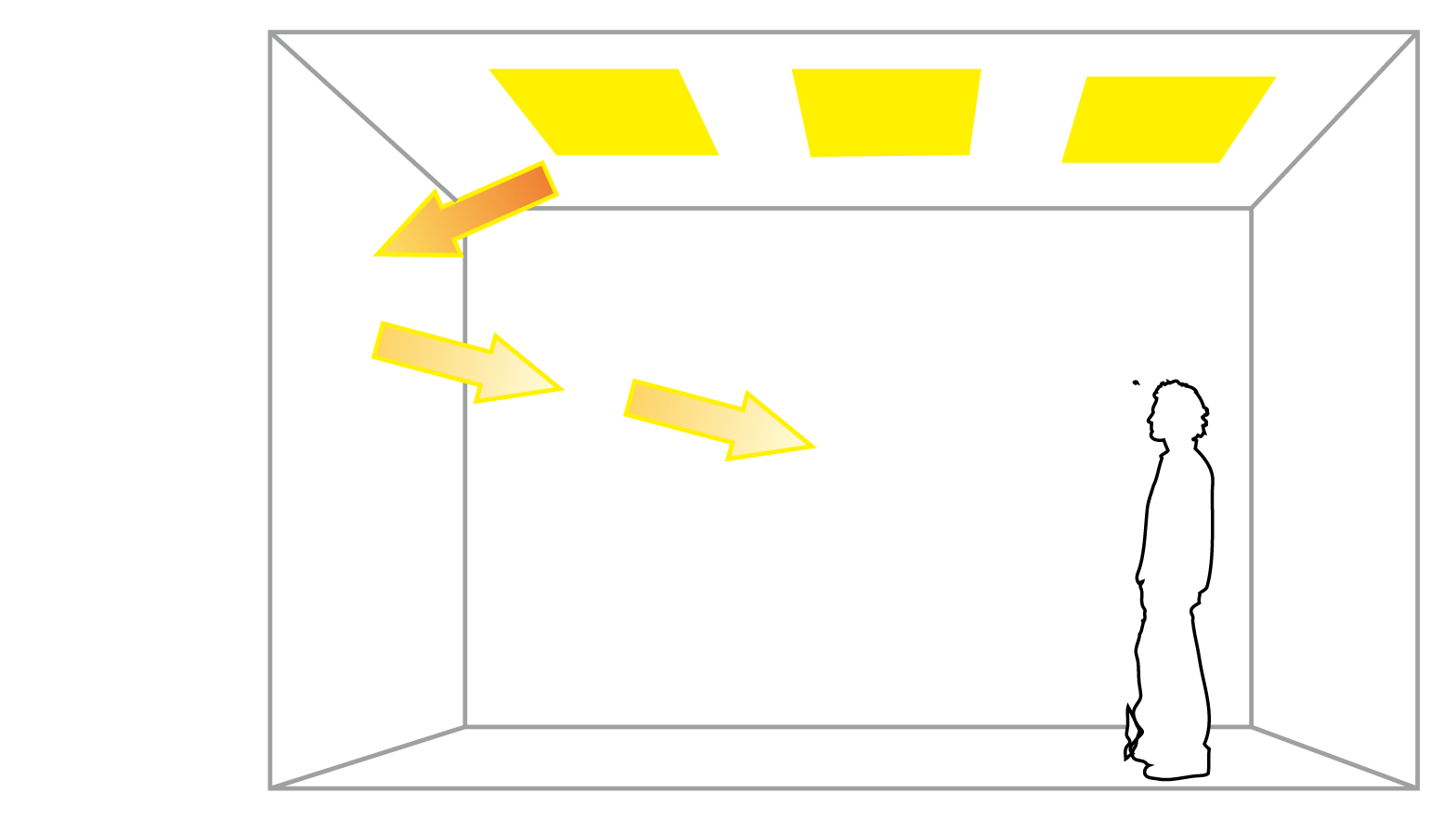 ommon office lighting
ommon office lighting
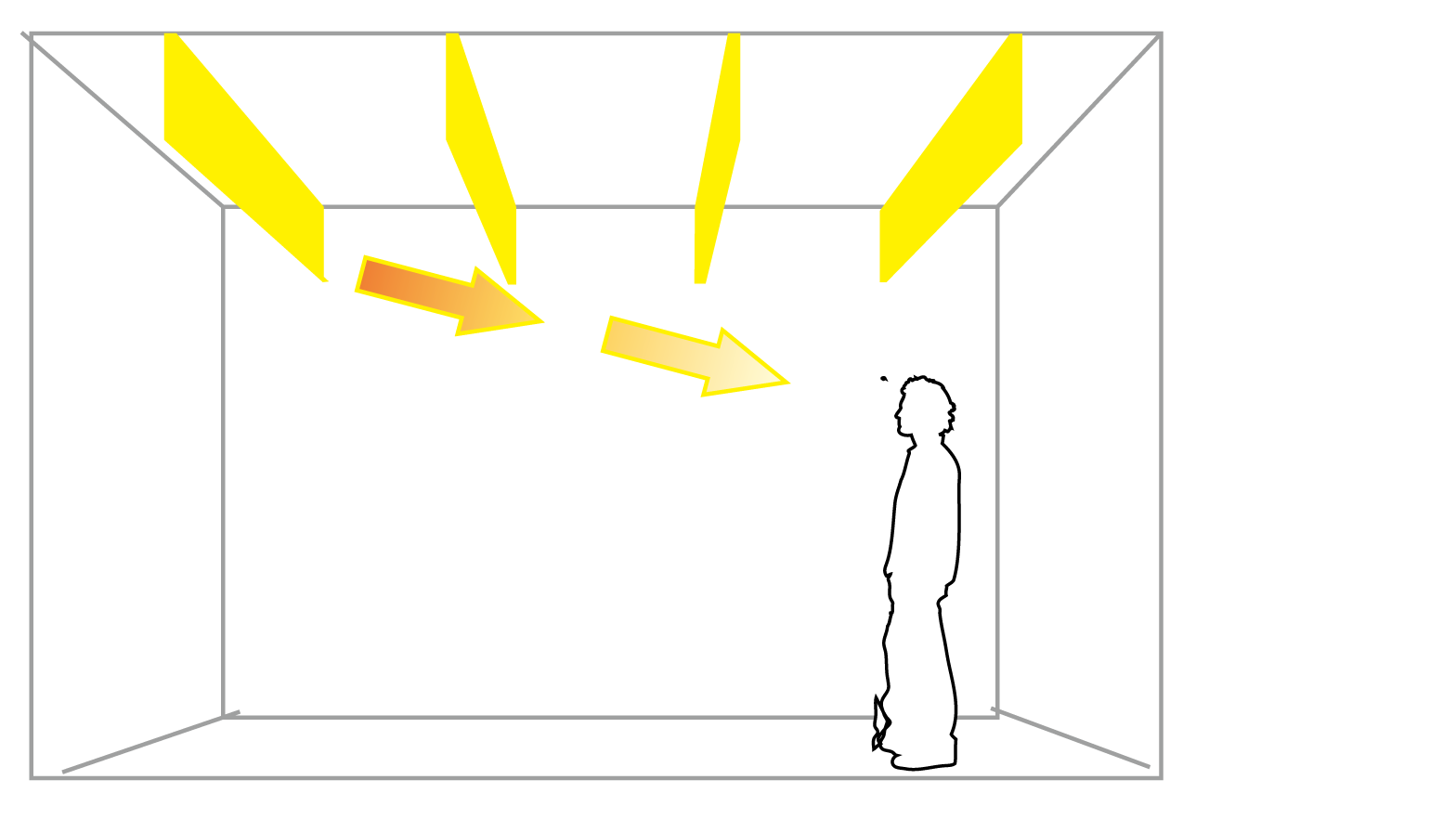 Ambient lighting in the Densan Shinhonsha Buikding
Ambient lighting in the Densan Shinhonsha Buikding
Conventional office lighting with luminaires installed parallel to the ceiling uses reflected light to create a perception of brightness. In this project, however, we installed vertical light-emitting surfaces that allow light to enter the eye directly, resulting in efficient enhancement of perceived brightness
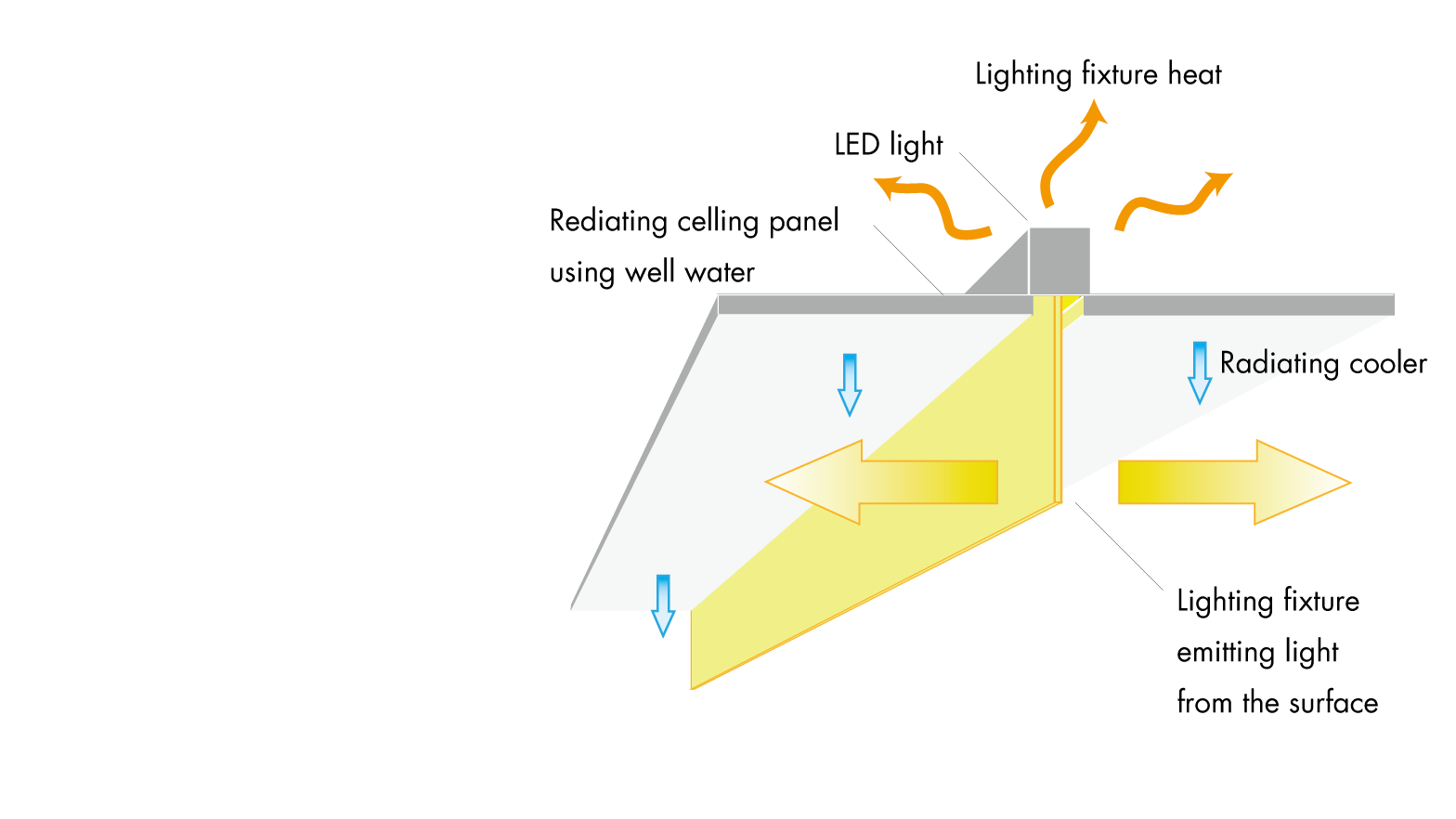 Overview of luminaire developed for the new Densan headquarters building
Overview of luminaire developed for the new Densan headquarters building
LEDs, which are sources of heat emission, are installed behind the ceiling to prevent them from emitting heat to the room.
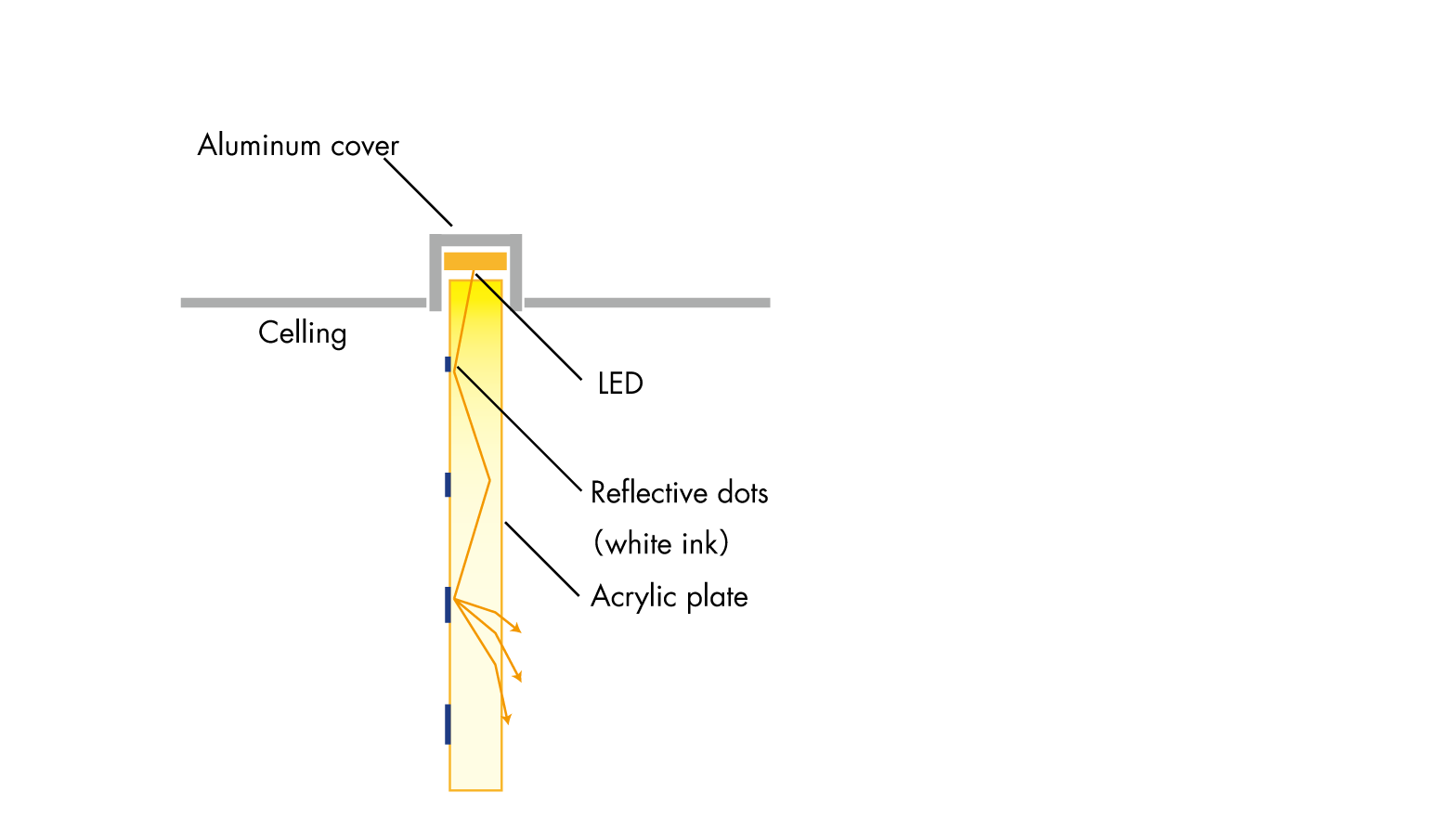 Mechanism of the light guide plate
Mechanism of the light guide plate
We developed a silk-screen light employing the technology of a double-sided light-emitting light guide plate that takes advantage of the directional light property of LEDs. This translucent but luminous material creates a space that is pleasant from the aspect of design as well
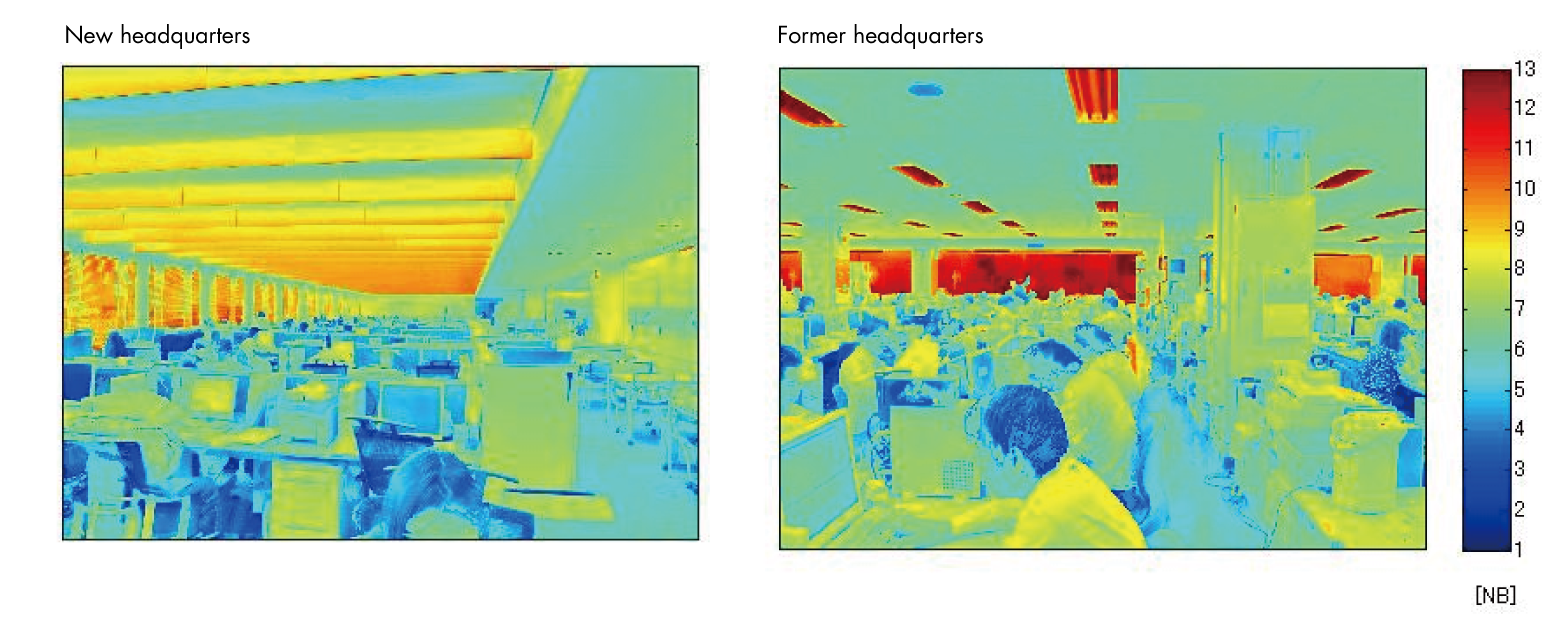 Images comparing perceived brightness in the former and new headquarters
Images comparing perceived brightness in the former and new headquarters
A large contrast exists between the lights and ceiling of the former headquarters, and the ceiling surface has a low perceived brightness. In comparison, it can be seen that in the new headquarters, light fills the entire space, including the ceiling, to achieve good levels of perceived brightness. The former headquarters also had reduced perception of brightness due to excessive daylight-induced contrast.Energy savings have been achieved with energy consumption of 4.7W/㎡, no more than one-third that of conventional lighting, and a daily daytime average of less than 4W/㎡.
Simulation studies conducted in this project using perceived brightness images
